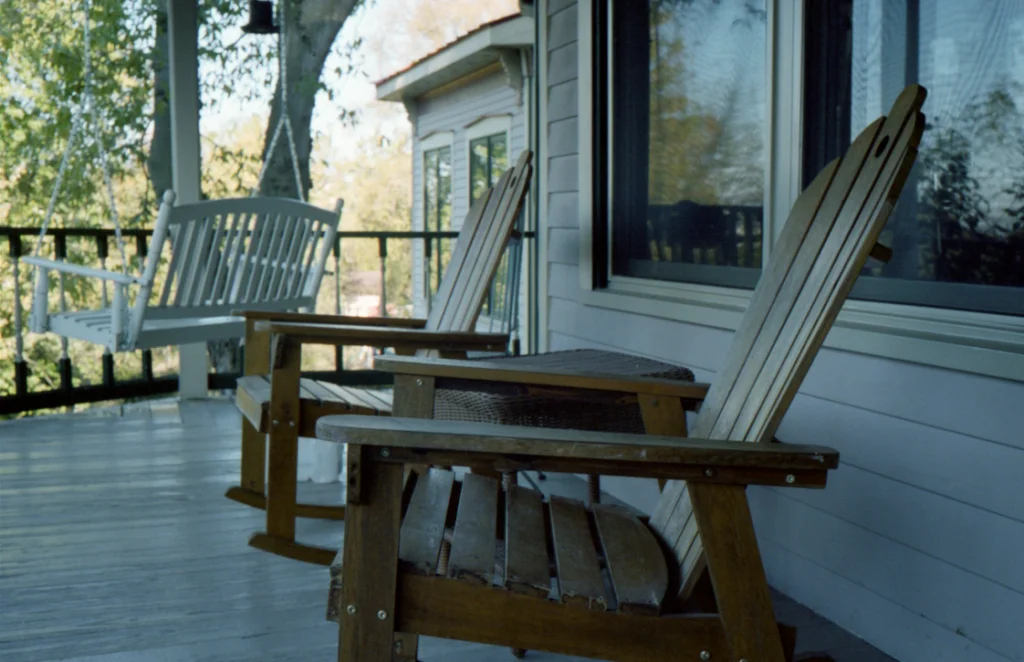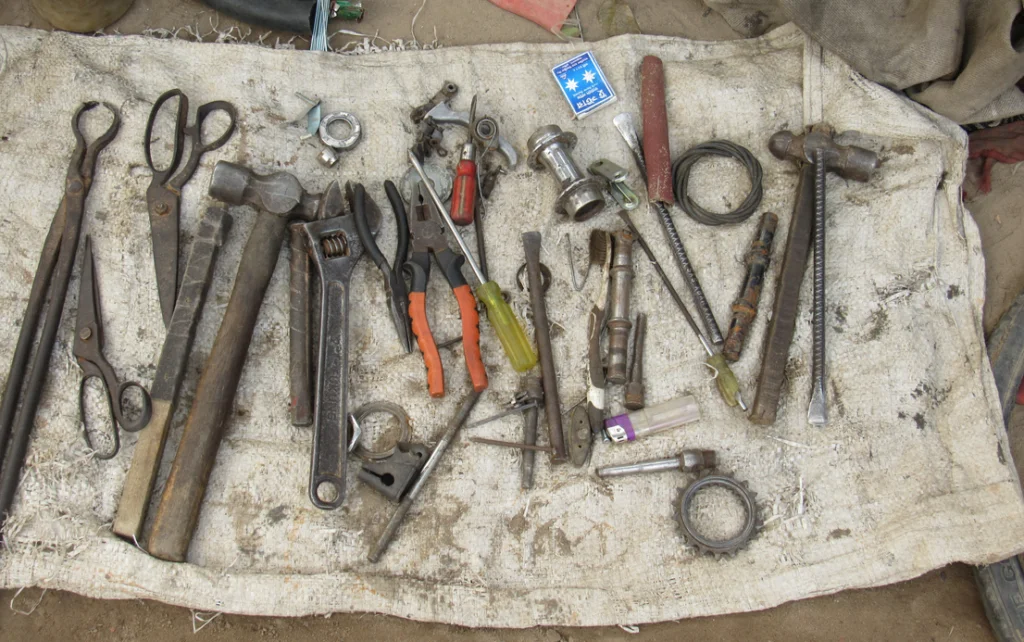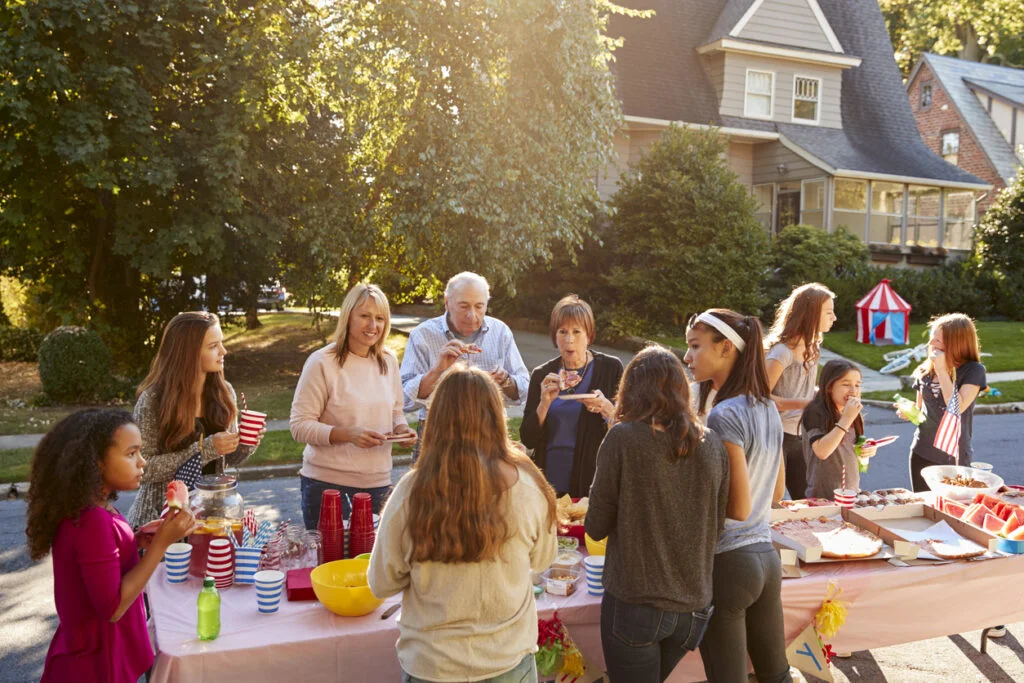Remember when neighbors weren’t just people who lived next door, but extended family members who shared your joys, sorrows, and Saturday morning coffee? There was a time when neighborhoods were microcosms of society – each street having its own ecosystem of characters and personalities that somehow formed a perfect community tapestry. Before smartphone screens replaced front porch conversations and social media replaced block parties, these were the neighbors who made our streets feel like home.
1. The Neighborhood Watch Captain

Mrs. Jenkins didn’t need a formal title to be the street’s unofficial security system, positioning her rocking chair strategically by the front window where nothing escaped her attention. She knew everyone’s comings and goings, could tell you exactly what time the Henderson boy came home last night, and wasn’t afraid to call your parents if she spotted you up to no good. Her vigilance was both comforting and slightly terrifying, creating a neighborhood where children knew someone was always keeping an eye out for their safety. These days, it persists as National Neighborhood Watch, but there was always something to the personal nature of a close-knit community.
Her house was command central for neighborhood intelligence, storing a mental database of every license plate, visitor, and delivery person who dared enter her domain. She’d bring you a casserole when you moved in, but you’d quickly realize it came with the unspoken agreement that you’d report any “unusual activities” to her immediately. Despite occasional grumblings about her nosiness, everyone secretly appreciated Mrs. Jenkins during power outages, family emergencies, or when suspicious characters lurked nearby.
2. The Tool Library Guy

Mr. Wilson’s garage was the neighborhood’s unofficial hardware store, housing every tool known to mankind, organized with military precision. He could fix anything from a broken bike chain to a faulty carburetor, and his weekend projects in the driveway attracted a rotating audience of neighbors seeking advice or just conversation. His knowledge wasn’t limited to mechanical matters – he seemed to understand the inner workings of everything from toasters to television sets, making him the first person everyone called before paying for expensive repairs. There are a lot of gadgets out there, and WIRED goes over a bunch of the most essential and helpful to have on hand, or to be the neighborhood tool source.
The beauty of Mr. Wilson wasn’t just in his extensive collection of tools but in his genuine pleasure at sharing both his equipment and expertise. He never rushed you through returning that hedge trimmer, and somehow remembered exactly which wrench size fixed your particular model of washing machine. The neighborhood kids received their first lessons in responsibility and craftsmanship in his workshop, where safety goggles were mandatory and patience was the most important tool in the box.
3. The Cookie Lady

Mrs. Peterson’s kitchen window seemed to have a magical sensor that detected children playing outside, prompting fresh-baked treats to appear precisely when energy levels dipped. Her chocolate chip cookies achieved legendary status in the neighborhood – perfectly crisp around the edges yet mysteriously soft in the center – and rumors circulated that she had once turned down an offer from a famous bakery chain. She knew every child’s birthday, favorite flavor, and which kids had nut allergies long before such awareness was common. CBS News confirms that chocolate chip, to this day, wins at the polls for America’s favorite cookie flavor.
Her kitchen was perpetually warm and smelled of vanilla, cinnamon, and comfort, becoming a natural gathering place where neighborhood news was exchanged over coffee and dessert. During holidays, her cookie production reached industrial levels, with tins delivered to every house on the street, each containing the recipient’s personal favorites. When new families moved in, Mrs. Peterson’s welcome platter arrived before the moving truck had fully departed, establishing the sweet tradition of community that defined the neighborhood.
4. The Neighborhood Historian

Mrs. Abernathy had lived on the street since houses cost under $15,000, and she remembered every family who’d ever occupied each home. Her stories painted vivid pictures of how the neighborhood evolved, from dusty dirt roads to paved streets, from party line telephones to cable TV. She knew which houses had additions built in the 70s, which families had feuded over property lines, and could tell you exactly where the neighborhood children built their secret forts in the undeveloped woodlot before it became the Maple Ridge subdivision.
Her photo albums were community treasures, documenting decades of block parties, snowstorms, and the gradual transformation of saplings into towering shade trees. Young couples moving in would inevitably receive an informal history lesson during their first week, complete with gossip about previous owners and warnings about basement flooding patterns. Though some details might have been embellished over time, her stories created a sense of continuity and belonging that made newcomers feel part of something larger than themselves.
5. The Lawn Perfectionist

Mr. Donaldson’s grass was so meticulously maintained that neighborhood children whispered it might be artificial, though no one dared step on it to verify. His mowing pattern alternated weekly between diagonal and horizontal stripes, his edging could have been done with surgical tools, and his seasonal fertilizing schedule was rumored to be NASA-approved. The neighborhood’s unofficial beautification committee of one, he set the standard that everyone else quietly competed with, ensuring property values remained strong even during economic downturns.
His garage contained an arsenal of lawn care equipment that professional landscapers would envy, each tool cleaned and stored with reverent care after use. Weekend mornings began with the ritual hum of his mower at precisely 8:00 AM, serving as the neighborhood’s unofficial alarm clock and marking the beginning of yard work day for everyone else. Despite occasional eye-rolling about his intensity, neighbors secretly appreciated how his horticultural obsession elevated the entire street’s appearance and often sought his advice when their own lawns developed mysterious brown patches.
6. The Carpool Coordinator

Mrs. Thompson somehow managed to transport half the neighborhood’s children to school, soccer practice, and piano lessons in her station wagon despite having only two children of her own. Her mental scheduling abilities rivaled military logistics experts, matching pickup times, locations, and which children could be safely seated next to each other without World War III erupting in the backseat. Her car was perpetually stocked with emergency snacks, Band-Aids, and spare socks for unexpected puddle encounters.
She knew every child’s teacher, coach, and which ones needed extra encouragement before tests or performances. The carpool conversations in her vehicle provided children with their first experiences of community beyond family, where neighborhood news was exchanged, conflicts resolved, and lifelong friendships formed amid shared complaints about homework. When children eventually earned their own driver’s licenses, many still spontaneously stopped by Mrs. Thompson’s just to check in, drawn by the habits of connection she had woven into the neighborhood fabric.
7. The Neighborhood Handyman

Mr. Rodriguez could fix anything with duct tape, WD-40, and what he called “mechanical sympathy,” an almost supernatural ability to diagnose problems just by listening to a malfunctioning appliance. His pickup truck was a familiar sight throughout the neighborhood, appearing within minutes of a desperate phone call about burst pipes, stuck garage doors, or mysterious furnace noises. He refused payment beyond the occasional home-cooked meal, insisting that neighbors helping neighbors was “just how things are supposed to work.”
His collection of spare parts occupied half his basement, organized in a system only he understood but somehow allowing him to find exactly the right washer or hinge within seconds. Children followed him like apprentices during his repair missions, learning practical skills alongside lessons about community interdependence. His greatest gift to the neighborhood wasn’t just fixed problems but the confidence he instilled in others to attempt their own repairs, creating a self-sufficient community where knowledge flowed freely between households.
8. The Garden Guru

Mrs. Chen’s backyard was part botanical garden, part farmers’ market, and part neighborhood gathering space, with vegetables growing in such abundance that shopping for produce became unnecessary during summer months. Her green thumbs seemed magical, coaxing tomatoes to grow twice the size of store-bought varieties and nurturing herbs that transformed ordinary dishes into culinary masterpieces. She practiced companion planting long before it became fashionable, understanding intuitively which plants protected each other and which needed separation.
Her garden knowledge crossed cultural and generational lines, combining traditional wisdom from her grandmother with scientific understanding from her biology background. Neighborhood children learned where food really came from while helping to harvest beans or search for ripe strawberries hidden beneath leaves. During harvest season, brown paper bags of produce appeared mysteriously on porches throughout the neighborhood, and her canning workshops in late summer ensured that her garden’s bounty extended into winter months when community gatherings moved indoors.
9. The Neighborhood Nurse

Mrs. Williams wasn’t officially a medical professional, but her calm competence during emergencies made her the first person called when a child fell off a bike or an elderly neighbor felt unwell. She kept a first aid kit that rivaled small hospitals, could distinguish between “watch and wait” fevers and “head to the ER immediately” symptoms, and somehow always had the exact medication needed for middle-of-the-night emergencies. Her home became the neighborhood’s unofficial urgent care center, where scraped knees received not just bandages but the emotional reassurance that everything would be alright.
Her medical knowledge came from raising four active children and decades of volunteering with the Red Cross, creating a practical wisdom that complemented rather than replaced professional healthcare. She drove neighbors to doctor appointments, translated medical jargon into understandable terms, and kept a watchful eye on elderly residents during heat waves or cold snaps. The neighborhood children learned basic first aid at her kitchen table, where mannequins for CPR practice sometimes sat alongside cookies and homework help.
10. The Block Party Organizer

Mr. and Mrs. Johnson transformed ordinary weekends into community celebrations, their garage perpetually storing folding tables, coolers, and the neighborhood’s shared party supplies. They remembered which holidays mattered most to each family, ensuring that cultural traditions from Hanukkah to Lunar New Year received proper recognition alongside Memorial Day barbecues and Fourth of July fireworks. Their organizational charts for potlucks ensured perfect balance between main dishes and desserts, while their gift for introducing newcomers made everyone feel immediately included.
Their greatest talent was making community gatherings feel simultaneously special and effortless, creating traditions that children assumed had always existed. The annual Labor Day water balloon fight, Halloween costume parade, and summer solstice ice cream social became neighborhood institutions that marked the passing seasons and created shared memories spanning generations. When young adults returned to visit parents, they inevitably asked about the Johnsons and whether they were still organizing the holiday caroling that had seemed magical during childhood winters.
11. The Neighborhood Grandparent

The Andersons had technically raised their own children decades ago, but they continued functioning as surrogate grandparents for every child on the block. They attended school plays and baseball games for neighborhood children whose own grandparents lived far away, their refrigerator displaying artwork and report cards from multiple families. They dispensed butterscotch candies, life advice, and the undivided attention that busy parents sometimes couldn’t provide, creating a multi-generational support system that enriched everyone involved.
Their home became a safe harbor for teenagers navigating difficult conversations with parents, their decades of experience providing perspective without judgment. They kept spare house keys for half the neighborhood, watered plants during vacations, and somehow remembered every child’s favorite birthday cake flavor. The neighborhood benefited immeasurably from their presence, their snow-white hair and unhurried pace providing living reminders that communities functioned best when embracing all stages of life.
12. The Welcome Wagon Coordinator

Mrs. Santiago made it her mission to ensure no new family spent their first night in the neighborhood feeling like strangers. Her welcome baskets included homemade bread, local honey, a neighborhood directory with handwritten notes about each family, and invitations to upcoming community events. She organized the rotation of meal deliveries for new parents, families experiencing illness, or residents recovering from surgery, ensuring that no one faced difficult times without concrete support.
Her greatest gift was making introductions, intuitively understanding which families might form natural friendships or which neighbors shared unusual hobbies. New residents found themselves naturally integrated into existing social networks, invited to book clubs, walking groups, or children’s playdates based on their interests. The neighborhood’s remarkable cohesion wasn’t accidental but the result of her deliberate community building, creating connection points that transformed strangers into neighbors and neighbors into friends.
The beauty of these neighborhood archetypes wasn’t that they were extraordinary people, but that they were ordinary folks who understood their role in creating community. They demonstrated that neighborhoods aren’t just collections of houses but ecosystems of relationships that require tending and care. While today’s busy schedules and digital distractions have changed how we interact, perhaps there’s something valuable in remembering when a neighbor was more than someone who lived nearby – they were extensions of our own families, creating the village that raised us all.


